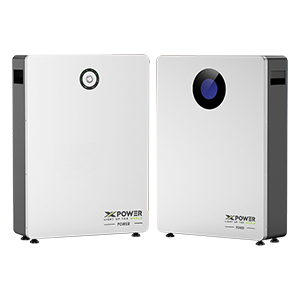How Many Solar Batteries Do You Need? A Simple Guide
Time of Release : 2024-06-11
So, you've decided to embrace the power of solar and are ready to step into the world of solar-plus-storage systems. But, before you do, you might be wondering, “How many solar batteries do I actually need?” Fear not, because we've got your back! We understand that the process of sizing solar batteries can seem intimidating, but fret not, because we’ll guide you through a simple three-step process to nail that decision like a pro.
Table of Contents
Step 1: Why are you installing a solar battery?
Let’s start with the basics – understanding why you’re venturing into the world of solar batteries. Is it merely to have a backup power supply that kicks in during those pesky outages? Or, are you aiming to boost your self-consumption game and free yourself from the clutches of the grid? Knowing your purpose is crucial as it will pave the way for informed decision-making down the road.
Step 2: Understanding the factors that impact storage size
If you’re scratching your head wondering what factors come into play when determining the size of your storage system, fret not, we've got you covered. Here are a few key factors to contemplate:
1. Energy Appetite: Take a deep dive into your historical energy consumption patterns. Examine your average daily energy consumption, peak energy demands, and any seasonal variations. This information holds the key to estimating the amount of energy your batteries should be equipped to store.
2. The Autonomy Angle: How long do you want your solar batteries to keep the lights on during an outage? Delve into your specific needs and the typical duration of power interruptions in your area.
3. Efficiency Matters: Take a moment to ponder over the efficiency of your solar panels, inverters, and batteries. Each of these components flaunts its own efficiency rating, and factoring these in will pave the way for a more accurate estimate of your storage needs.
Step 3: How to calculate the number of batteries you need
Now that you’ve got your purpose locked in and a good grasp of the factors that influence storage size, it's time to flex those mathematical muscles. Here’s a simplified approach to help you crack the code and calculate the number of batteries required:
1. Calculating Daily Energy Hunger: Multiply your average daily energy consumption by the desired days of autonomy. This yields the total energy capacity you’re aiming for.
2. Depth of Discharge Dance: Batteries shouldn't be pushed to the brink of exhaustion for longevity's sake. Account for this when tallying up your storage needs. For instance, if you require 10 kWh of usable energy and your batteries boast an 80% depth of discharge, you’d require a battery bank with a capacity of 12.5 kWh (10 kWh / 0.8).
3. Divide and Conquer: Divide the total energy capacity needed by the energy capacity of individual batteries to decipher the number of batteries required. For instance, if each battery touts a capacity of 2.5 kWh, you’d need 5 batteries (12.5 kWh / 2.5 kWh) in the scenario above.
Wrapping It Up With a Bow
By now, you’ve bravely ventured through the three-step battery sizing guide. Through establishing your purpose, dissecting the factors affecting storage size, and unleashing some math magic, you’re well on your way to making a confident decision about your solar battery requirements.
Remember, consulting with a seasoned solar installer or energy guru can further fine-tune your decision-making. So, armed with your newfound knowledge, step forth and embrace the sun's boundless energy to carve out a more sustainable and reliable energy future. It's time to take charge and make informed choices!
About the Author:
Welcome! I am honored to introduce our brand -- Xpower, the author behind this friendly guide to solar cell technologies. With over 15 years of experience in the solar photovoltaic (PV) industry, Xpower bring a wealth of knowledge and expertise to the table.
Xpower as a manufacturer and exporter in the field of solar energy, through years of hands-on experience, we have witnessed the evolution of solar cell technologies and the transformative impact they have had on the renewable energy landscape.




